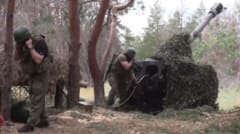Mapping the Conflict: Russia's Strategic Advances and Ukrainian Resilience
3 min read

In the complex theater of the Ukraine conflict, the summer of 2023 marks another significant chapter as Russia attempts to advance on multiple fronts. A recent analysis sheds light on these maneuvers, illustrating the strategic push across northern and eastern Ukraine. This advance, however, is met with steadfast resistance from Ukrainian forces, a testament to both tactical resilience and the high stakes involved in this protracted geopolitical struggle.
The Strategic Landscape
The renewed Russian offensives are concentrated across three pivotal areas: the northern sectors bordering Belarus, the eastern frontlines near the Donbass region, and strategically significant locations around Kharkiv. Each area presents unique challenges and opportunities, shaping the broader conflict narrative.
Historically, the eastern regions of Ukraine have been a focal point of contention. The Donbass, with its industrial significance and demographically complex makeup, has seen intermittent conflict since 2014. Russia's persistent interest in these areas underscores both historical claims and strategic ambitions. Control over these regions not only facilitates territorial consolidation but also serves as a potential leverage point in diplomatic negotiations.
Resistance Under Fire
Despite the intensity of these assaults, Ukrainian forces have demonstrated remarkable resilience. Their resistance is not merely a defensive posture but an active assertion of sovereignty and territorial integrity. This determination is bolstered by international support, both material and moral, from Western allies who have provided advanced weaponry and intelligence assistance.
The Ukrainian strategy has evolved significantly since the conflict's inception, with improvements in tactical coordination, rapid mobilization, and effective use of technology. The ability to adapt quickly to the fluid dynamics of battlefield conditions has been pivotal in repelling advances and maintaining territorial control.
Historical Echoes and Modern Parallels
The current situation echoes historical conflicts where smaller nations have stood firm against larger, more powerful adversaries. One can draw parallels with Finland's defense against the Soviet Union during the Winter War of 1939-1940. Finland's strategic use of its terrain, coupled with fierce nationalistic fervor, allowed it to inflict significant losses on Soviet forces, despite eventually ceding some territory.
Similarly, Ukraine's defense efforts are underscored by a strong sense of national identity and survival, both critical in fostering a unified front against external aggression. The historical context of these conflicts highlights the enduring themes of sovereignty, resistance, and the complex interplay of international politics.
The Broader Implications
The ongoing conflict in Ukraine is more than a regional dispute; it represents a critical juncture in global geopolitics. The outcome has significant implications for international order, the balance of power in Eastern Europe, and the principles of national sovereignty and territorial integrity.
As the conflict persists, the international community remains watchful, understanding that the resolution, or lack thereof, could set precedents for future conflicts. The resilience displayed by Ukraine and the strategic maneuvers employed by Russia serve as stark reminders of the complexities inherent in modern warfare.
In conclusion, the summer push by Russia and the corresponding Ukrainian resistance underscore the intricate dynamics of contemporary conflict. As maps of advances and defenses are drawn and redrawn, the world watches closely, recognizing that the stakes extend far beyond the immediate battlefields.
Source: Russia's summer push in Ukraine targets three fronts but faces stern resistance
